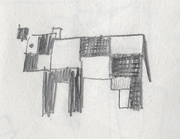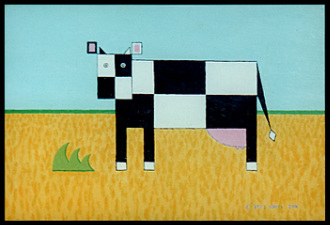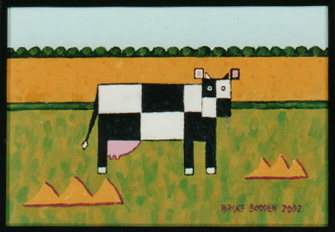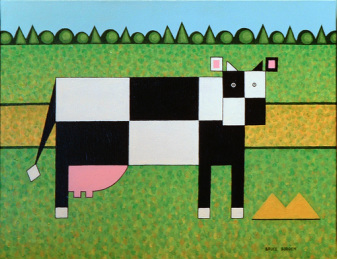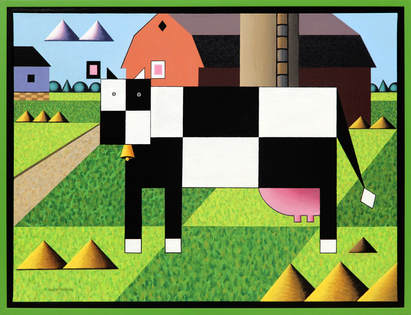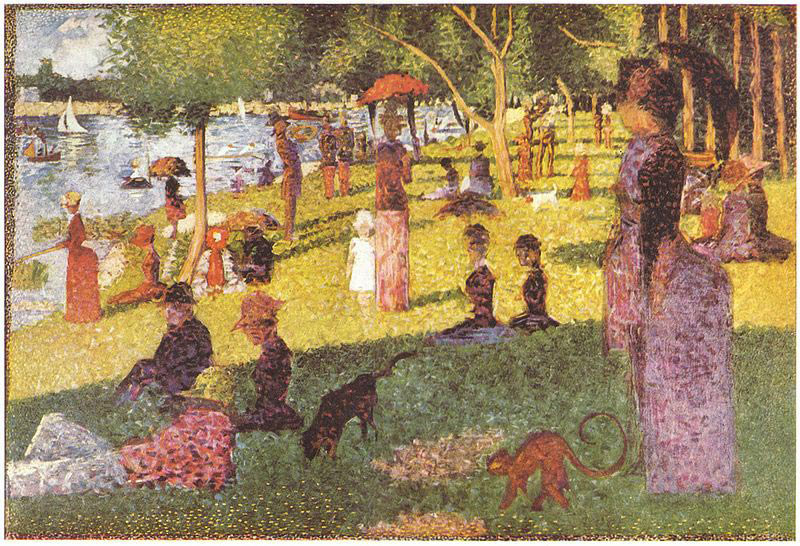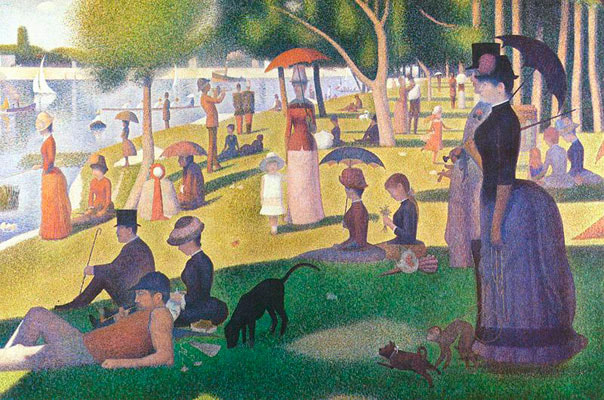Original Myths Debunked
I have encountered confusion from the public regarding the correct meaning of the term “an original” regarding art. To find the definition which I consider accurate, we must consider the root word of the term; “origin.” This means: (A) source, or (B) beginning. Another word referring to the same root word is “originator”…This means creator, inventor, maker or author. I have known since high school that when doing a painting from another artist’s image, whether copying somebody else’s photo or artwork, that the art work can not be considered original. Copying somebody else’s art is plagiarism, and therefore it would not be an original. Even if somebody copies another artist’s artwork, but makes some changes so that it would be “one of a kind,” it would not be an original. So being “one of a kind” does not make an original, and original does not have to be one of a kind. If “not unique” meant “not original,” then any artist could make any piece of art in museums “not original,” simply by painting another one just like it themselves. Being original refers to authorship, or who is responsible for the work. This is why they say, "An original Picasso," or "An original Van Gogh."
Webster’s dictionary also defines the noun “original,” as “any work composed firsthand.” So, if the artist is the only source of the work, then it is “an original.” That is the correct definition for art, (which is a noun,) and if an artist makes a piece of art that truly fits this definition, it would be erroneous for anyone to refer to it as “not an original.” While it is true that one can look up the word “original” and find that the adjective definitions of “original” can mean first, or also unique,…a piece of art can be an original, (Noun) without being first, or unique, (Adjectives.) A second attempt by the originating artist is still an original, even though it may not be first or unique, as long as it is a genuine example of the artist’s work. The noun is not the same as the adjective. Just like a green orange is still an orange (Noun) even though it is not orange (Adjective.) In fact, one adjective definition contradicts the other, for the word “first” implies several, and so “not unique.”
Also, fine art prints, (not to be confused with “mechanical reproductions,” which are not originals, although sometimes I am guilty of using the term “prints” since it is misused so commonly that it is the norm) such as lithographs, etchings, relief prints and screen-prints or serigraphs, when done as a numbered edition, are still lawfully and correctly deemed “originals.” For if the artist is solely responsible for creating, designing and applying the image, or has only incidental assistance, the fine print is original. If an original had to be the first, only the first of the numbered edition could be an original. But this is not the case for the entire edition is made up of “multiple originals,” a term that would not exist if originals had to first or unique, for it would be an oxymoron. But since originals don’t have to be “unique,” they can be multiples, as they don't have to be the first either. I have encountered a weak argument regarding the originality of such prints in an edition, such as serigraphs, that there may be unrepeated flaws within the edition, such as registration mistakes or ink bubbles, and that these flaws make the images all “unique,” and that is why they can be called “original.” But if an artist were to somehow master his printmaking technique so that there were no such flaws, and thus no differences between any of the prints in the edition, the work should be even more valued, not less valued. For if the flaws were necessary to have the prints be labeled “original,” since they are then “unique,” this would discredit such a skilled artist instead of crediting him. After all, it is the goal of an artist when making an edition of fine art original prints, that there would be no errors in the edition, and when this is achieved, it should lead to greater value, not less, if they would then be “not unique” and thus “not original.” What makes a print in an edition an original of the artist, is that it is designed and created by that artist, not that it is unique.
I believe that if an artist had only one chance to be original, the world would be devoid of masterpieces that could be labeled “original…” Because the sketches, thumbnail studies, reference photos or lesser pieces done “first,” vital to perfecting his ideas would be “the original,” and then the masterwork would be “not original” anymore, for they didn't come "first." But the masterwork has the most work and development put into it, and it is the artist’s sole involvement and work that make it an original of his, and thus its value. It is, in fact, impossible for well planned art to be the first attempt, for the planning always precedes it. When an artist creates something, it is his goal and right to pursue his idea to its fullest potential, just like an author has the right to proofread his own writings. It would be unfair to say that an artist has only one attempt to get his ideas down, for the first effort is seldom the best. Compositions, like mine, take planning. Mozart wouldn’t be expected to sit down at the piano and churn out a symphony on the very first playing,…and neither should a painter. It takes multiple efforts to make a masterpiece in any art form, or with any idea. If Thomas Edison’s first light bulb didn’t work, and if he would have limited his idea to that very first attempt, then he would have never created the light bulb. And Albert Einstein didn't go, "AHAA!...E=MC²" ...he probably had done dozens of chalkboards worth of figuring to get it to that point. Making art is like that too, and the results of lots of work are still original and should not be discredited just because it was not the first attempt.
Although there only can be one first, first is a relative thing. A second attempt may be the first one just like itself. A second attempt of an artist’s idea is still an original painting. A second version results from the artist’s desire and right to improve, grow and succeed. And even for the definition as unique, an improved painting is obviously different than a previous, lesser painting,…because it has to be different to be “improved.” It is really a moot point, for I have never done two paintings exactly alike. To the common observer, two pieces may be the same, but I am very particular about my art, and very observant,…so much so that the differences between two “same” paintings will be like night and day to me. For as I am a very keen observer...visual flaws jump out at me. That is how I paint...by discerning and then correcting those flaws. Once those flaws are corrected and nothing jumps out like a sore thumb to me, then it is a delight to my eyes. And I have every right to pursue any of my ideas to that state of enjoyment. And since my eyes become more keen as time and experience goes on, any old art of mine is now likely seen to me as flawed...which is every reason to make improvements in a greater piece if I desire, and if such a a painting is made, it is still an original. If I can make a piece of art that delights my eyes, which only see flaws, than how much more will that art delight the average viewer. I have the right to provide that enjoyment to myself, as well as to my fans.
It is perfectly acceptable for artists to reuse their own ideas and is not cheating anyone. This is merely a method for artistic growth and success, and is actually often quite necessary for good art to be created. Take my Cow paintings for instance. If I am merely copying Cow painting after Cow painting, then it must also logically follow that my last Cow painting would look exactly like my first one... if they are truly copies of each other. But no two have ever been exactly alike, and as proven above, much growth has occurred. And if my Cow idea was never redone and further developed, it would have stopped at the first half inch long pencil sketch in a notebook. It would have never been reworked and redrawn. And there would have never been any full color Cow painting. It had to be done over and over again just to develop into what it became. Any sketch, drawing or painting by the originating artist is still art...and is an original. It is irrelevant if it is in a sketchbook in a unfinished state, or if it is framed and ready for hanging, or even if it is sold. And to reuse an idea does not necessarily devalue an artist’s work either. If I had done only one Cow painting, the very idea of my Cow painting would not have gotten any exposure to the public whatsoever, and so the first one would be valued much less. Expanding on and repeating the Cow idea makes the first one more valuable not less, for it benefited from the public exposure that it would have never received if it wasn’t repeated. In fact, the very first Cow painting that I ever did sits in a shoe box somewhere right now, with its whereabouts not even known to the person who owns it. And I don’t even have a picture of it. So it can’t be seen by anyone at the present time, and never was seen by the public. So it is not cheating any collector to reuse your ideas, for it helps create value for all the artist’s work. Also of note... I didn't make any money whatsoever on my first cow painting... I gave it to somebody. Now don't I have a right as an artist to pursue my own good original ideas to give me a chance at some success? It is an unfair expectation to say that I can't profit from my own ideas, ...especially when being an artist is a very hard way to make a living. And so what if a painting sells to a collector?... What if the very next version is the painting that is seen by the right person that makes the artist discovered? This could be the case to various degrees with any piece of art that any artist makes. So repetition potentially creates value and is not cheating anyone.
So not only do I not believe that reusing your own ideas devalues your art like commonly thought, I think that the value of one's art is increased by further development, and I would even suggest that NOT reusing your ideas and developing them further devalues your art. For if the artist only makes imperfect first attempts, or only makes sketches that never develop any further, there would be no valuable masterworks, and so the artist would be less known and all his work less valued. And the first attempts would be less valued, for they didn’t lead to anything great or come from the artist known for creating the masterworks then not made. So the art collector should want that particular artist to create art of the highest caliber, even if it means that they have a painting that was later improved on with another attempt. It is selfish for the collector to say, “I want the only one!”…and in fact hurtful to their benefit to expect the artist to not improve…for the art that they collected will be more valued if the artist’s work becomes masterful or if the artist becomes famous. An artist has the opportunity to only make a limited number of paintings in his lifetime, and this limitation is all the collector is entitled to when they buy original art. If the artist can’t make his art the best that he can, then the artist and the public has been cheated. Just like an artist has a right to use his own sketch to make a painting, the artist also has a right to use his own painting as a sketch for another painting, even if the first painting is sold. Unless or until the artist sells or waives his copyright, it is still the artist’s right, and only that artist's right to use his images as much as he wishes. What they bought was the labor and the results of that specific and particular act of labor…the work…or that painting. They didn't buy the copyright of the image or a right to exclusivity of the image. The value of owning an original piece of art from an artist is that that specific person did the work involved in creating that piece, and to say that no else can own another painting like it is a myth. Original does not mean “one of a kind.” Nor does it need to be the first or in its initial state to be original.
What makes a song original? If the musician writes, composes and performs the music. It doesn't matter how many times they practice it and perform it, it is still their original song. The musician may tweak and adjust it as many times as they desire until it is to their liking. They can even make multiple recordings. They can perform it as many times as they can profit from or feel like it, but the song is still original. Music is no different than a painting in that way.
Every towering tree was once a smaller tree. Every smaller tree was once a sapling. Every sapling was once a seed. Would it be to the artist's credit for him to abort every creative seed he comes up with before it reaches its peak potential. OF COURSE NOT!! Every artist should feel the freedom to let any of their own ideas grow into its peak potential, and every art collector should want artists to do that as well.
It has been said that being perplexed is the beginning of knowledge. There was a time that I believed that "original" could mean "one of a kind." Until I came across a national art magazine art contest that had rules that stated that all entries must be "original in concept, design and execution." This requirement really perplexed me and made me think, for if you substitute "one of a kind" into the requirement for all three things instead of "original" then the requirements did not make any sense. As "concept" means "idea," it then meant that you could only have had one thought of its kind about the painting. That is impossible to do. And if the design had to be one of a kind, then that automatically ruled out having any photos, sketches or studies done to plan the work...so that also must not have been what they meant there as well. And although it can be true that you only had executed one painting, the fact that the concept and the design were apparently considered original without being one of a kind, then it also follows that the execution need not be one of a kind as well...so that erroneous definition of original needed to be altered to be able to fit all three. I began thinking even harder about this subject after I was told that a painting that I had done completely by myself was not original. I had to get to the bottom of this definition, and so I obsessed about this subject over the course of many years. If you equate what is original with authorship, and require art for that contest to be "yours" in Concept, Design and Execution, then it all makes sense, for the same definition can now logically fit all three. I believe I am right about my conclusion.
I feel that it is part of my job as an artist with high ethics to insist upon what is right on this matter, and to debunk the popular myths regarding this matter. Art that is original does not have to be “One-of-a-kind” a common yet inappropriate misconception that hinders and stifles artistic progress, growth and success, and also justifies illegal art and plagiarism. Nor does it have to be the first attempt to be an original…for this negates and discredits the achievement of the artist when he accomplishes his goal for his ideas. What “an original” does mean, is that the artist is the source of the art from start to finish; an independent creation of the artist; a work composed firsthand; or an authentic example of the artist’s work. This preceding article is not a case of clever manipulation to try to get you to believe something false. This is exactly what I believe to be true after giving this subject very much thought. I believe that understanding this will be a benefit of both artists and collectors, for people who don’t know what original means inadvertently do the art world a disservice.
The Post Impressionist George Seurat is most famous for his grand masterpiece, "Sunday Afternoon On The Grand Jatte." He did many, many smaller scale studies to plan out and develop his huge masterpiece. He would not be as famous if he had not reworked and repeated his ideas over and over again that led up to and completed this masterpiece, so therefore, all of his works would not be valued as much if he had not repeated himself. Unlike popular opinion that says that when an artist repeats himself, that he devalues his art, I believe that an artist devalues his own work if he does NOT develop his ideas to its fullest potential...so artists should not stop their ideas until they themselves are satisfied. Limiting an artist's success and quality of his artwork is what limits an artist's value, for artistic success and the quality of his body of work is what leads to artistic value.

